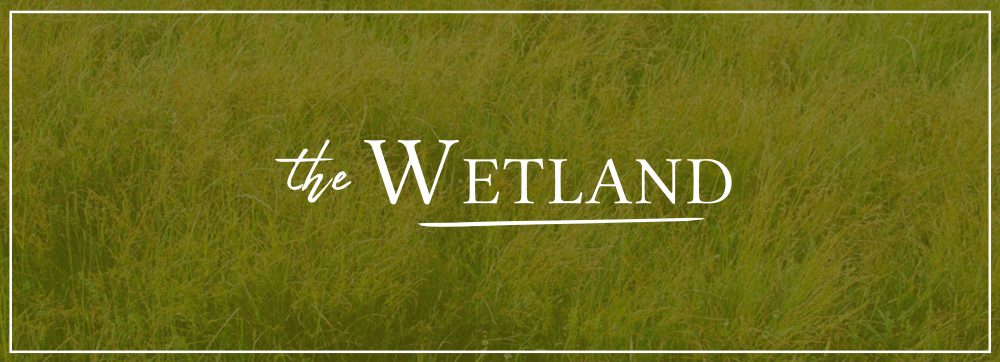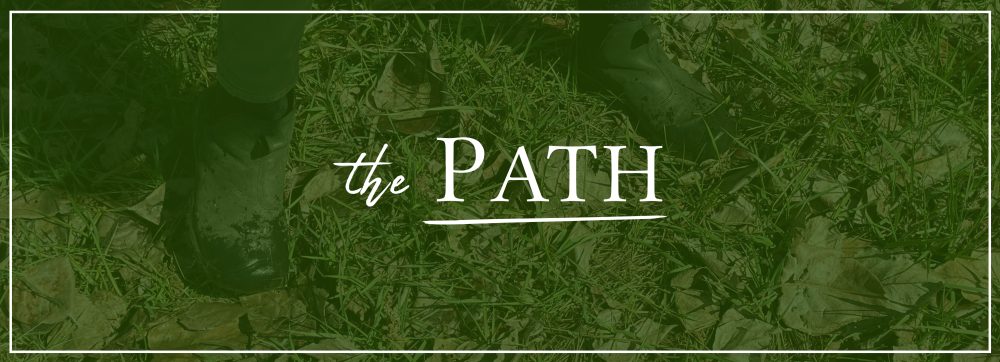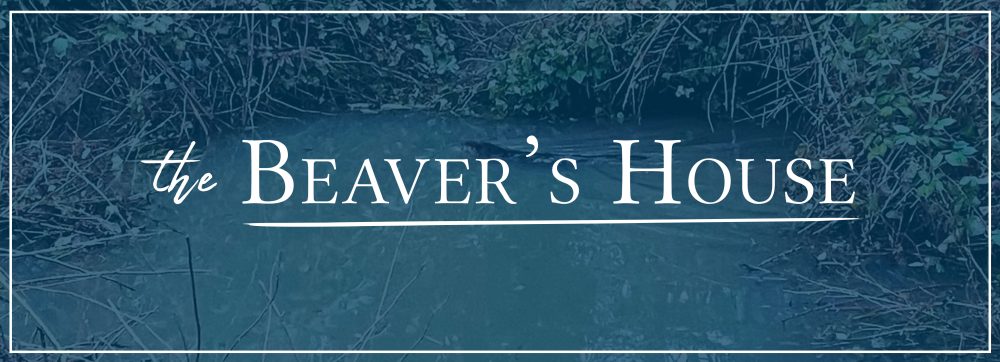Field Study of a Writers House
by Kira Brooke Smith, 2023 Carolyn Moore Writing Resident
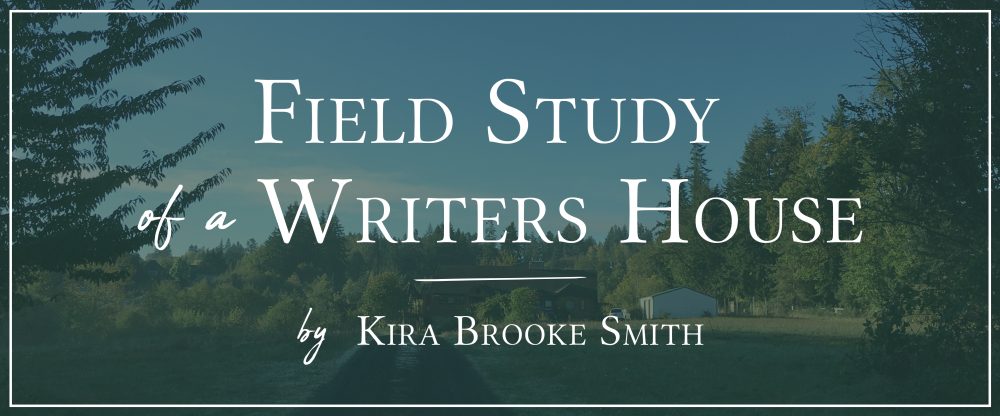
Carolyn Moore’s house is on the cusp of countryside. To get there, I drove fifteen miles southwest from the rental house I share with two people and a cat in Portland. On the way I passed through suburbs and spreading towns until I reached the frontier of urban growth in Tigard, where the house Carolyn had built for herself and her father sits on a hilltop surrounded by nine acres of orchard.
Carolyn wasn’t a farmer in the traditional sense, though the orchard and fields were once a farm. She was a poet and educator who lived and taught in Northern California before returning to “the last vestige of the family farm” (as she put it) in the mid-’90s, just as so much concrete and cinder was winding its way down from Portland. When she passed in 2019, she left her home and property to Portland Community College to serve as a haven for writers and writing education. I was lucky to be a new resident at the Carolyn Moore Writing Residency.
And I was late to meet the residency coordinator, Justin. I passed the turn onto the drive, a common mistake I was warned about. The gravel driveway leading to the house was tucked into shrubs and birch trees around a stream culvert on the right and disguised by the entrance to a suburban neighborhood on the left.
I found the turn, passed the backyards of the little neighborhood, and continued driving parallel to the stream, though it was hidden by a dense copse of twisting laurels, shrubby willows, and hazel trees. A dozen meters down the road I noticed a gap where it looked as if someone had felled trees with an ax to access the water or for firewood. Except, when I slowed to take a better look, I saw that the remaining stumps were pointed at the tips, and logs left on the ground had been partially hacked into segments before they were abandoned. I backed the car up a few feet to make sure what I had seen was not just what I had wanted to see. The wood cuts looked to me to be too small and uneven for an ax; rather, they looked more like chew marks, the way the work of beavers is rendered in cartoons and featured on nature shows. I’d been working in watershed health and education as my day job for five years and had never seen a beaver in all my time tromping up rivers. Now I suspected I was going to have one for a neighbor, but if we were to meet, I’d have to come back later because beavers are nocturnal. I was late enough as it was.
I emerged to see a rolling field dotted with fruit trees that spoke to a not-so-distant past. The house at the back of the property was more handsome than it looked in photos, neatly assembled with real wood beams, stone stairs, and a well-tended garden. Most notably, a turret-crowned terrace overlooked the property. It had the best vantage point for bird watching and gave the impression of a Victorian era aristocrat, writing novels in their country home. I already knew I’d be drinking coffee there in the morning.
My first impression was wood and light; sun overflowed tall windows, spilling onto floors, shelves, cabinets, and vaulted ceilings, all crafted in warm-toned wood. It’s the type of house a poet would build.
Carolyn had divided the house into two separate wings, one for her and one for her father, Gordon, so they could live as neighbors in his late age. Justin met me in Carolyn’s wing, where I would be staying and writing for the next month. He walked me through the house, showing me the wing’s living spaces—bedroom, walk-in closet, bathroom, office, and kitchen. The Great Room was the center of the house; it was a space fit for a council, with leather armchairs around a handsome wood table, and a fireplace on the far wall. As I was introduced, I tried imagining what it would be like to enter a bathroom without waiting my turn or to fill a fridge and cabinets without compromise. When I had applied to the Carolyn Moore Writing Residency, I had focused my proposal on the gift of time. It hadn’t occurred to me that art also takes space.
Justin left to go teach in the city and when I closed the door behind him, I was stunned by how suddenly still everything was. I couldn’t remember the last time I had the freedom of an unwitnessed life.
The first thing I did was exercise curiosity without the burden of manners. I rifled through every drawer and cabinet to find hints of past residents—notes, candy, broken pencils, poetry drafts scribbled on scrap paper. I marveled over each figment, imagining the writer who had left it behind. In a closet drawer I found an envelope with “Goodbye day job, hello writing time” written neatly on the front. I worked in environmental restoration, but like most bureaucrats, my days were sunk into paperwork, meetings, and logistics. I dropped the envelope on my nightstand as a token of reprieve.
Then, there was the writer whose presence I felt in every room, and who had left a lifetime of objects—travel books, an Antony and the Johnsons poster, mask collection, ornate tablecloths, and literary anthologies of every genre. Carolyn’s idiosyncrasies and passions shape the daily lives of resident writers, who in turn left prints for future cohorts.
The kitchen, for example, spoke of an accomplished chef and host. I got lost in its abundance of drawers and cabinets trying to make myself dinner. Pots pans, serving trays, bowls, plates, cups, all organized according to someone else’s logic. I imagined that each new resident put things in a place that made sense for how and what they ate. Then the following resident re-structured the cookware according to their own needs.
After I put all the pots and pans in their proper place, I sat in the Great Room with a home-cooked meal and a bottle of wine that had been waiting on my shelf since a dinner party three months ago. I turned on the gas fireplace and cracked the fresh blue spine of The Great Uncluttering, Carolyn’s collected works (published by PCC Panther Press, 2022). Each resident was gifted a copy and I intended to read as much as possible during my stay, even though poetry challenged my literalism as an essayist.
Even so, I read my own tendencies in Carolyn’s poems when she positioned plants, animals, and the non-human world as active characters in their own stories. Maybe because we both grew up in rural areas, where farm country met forest, and the earth we knew wasn’t manicured for the human aesthetic. It’s a workhorse covered in manure, one that worked us back.
The Carolyn Moore Writers House was the setting for her interpretations of a shifting cultural and ecological landscape, back when it was just Carolyn Moore’s house.
Tomorrow, my reckoning with eighty.
At the first shriek in my joints
I will rise to walk the lane
as far as the new intersection
where tires whine through rain
and dry the pavement out of season.
In between poems I listened to gas hum through the lines, and the fire snapped and simmered. I strained for other noises from outside or my fellow resident next door. But the silence was resolute—even with budding neighborhoods across the orchard.
I went to bed still listening.
The most important things to do at the Carolyn Moore Writers House are eat, sleep, and wrap yourself in blankets while listening to a fireplace. The second most important thing is to put on your boots.
At home I write on a child’s Ikea desk pushed into the corner of my bedroom. My usual workspace cannot accommodate books, lamp, laptop, and notepad, so I juggle things to the floor when I don’t immediately need them. I hardly knew what to do with the two adjoining desks in the residency office. I stacked my books (first by size, then by genre) on the desktop, spread my drafts next to the books, moved one of the green glass lamps closer so I could read in morning light. I chose the best of Carolyn’s two desk chairs (the leather one with the winged back) and sat, admiring the breadth of my new space.
Then I decided I had had enough office for the day.
The most important things to do at the Carolyn Moore Writers House are eat, sleep, and wrap yourself in blankets while listening to a fireplace. The second most important thing is to put on your boots.
***
Walking is part of my creative process. What would I write about if I couldn’t pull from the world’s progress? To walk the lane as Carolyn had. In the city landscape I chart routes for checking up on birds’ nests, ant hills, emerging flower buds, and new books in the little free library. Checking serves a gatherer’s need to take stock of the season’s growth and shortages. Curiosity is instinct.
I drank coffee out of Carolyn’s fine china while sitting outside under the turret, looking out over the orchard and woods beyond-seeking points of interest for a morning walk. The world was fresh off snow, and the trees and shrubs were dull brown and green, except for a single flare of yellow tucked into the edge of an overgrown row.
The willow, instinct said.
Of course, I replied.
At the Writers House there is room for instinct.
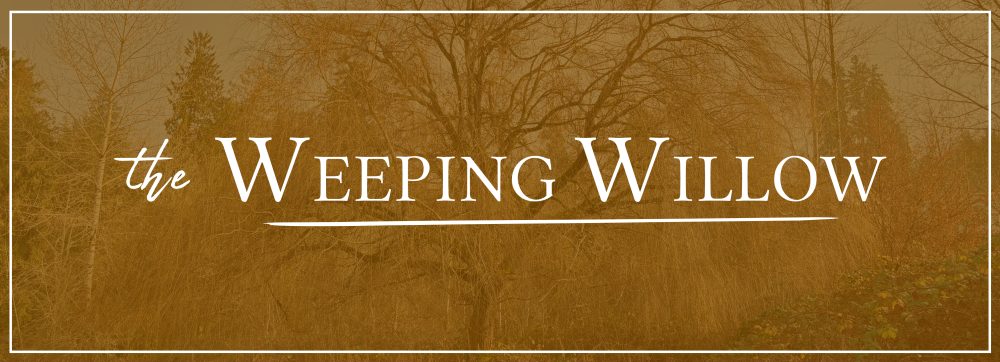 When people called to ask me how the residency was going, I asked them if they remembered what it was like to be a kid on summer break; to reclaim your time and attention and go forth into summer with a liberated imagination. Children know what it is to revel in a season.
When people called to ask me how the residency was going, I asked them if they remembered what it was like to be a kid on summer break; to reclaim your time and attention and go forth into summer with a liberated imagination. Children know what it is to revel in a season.
I stepped off the porch and into the onset of spring. It smelled dank and sweet where frost had relinquished its hold over the past few days. Still, I was surprised to find the ground soggy underfoot, almost reaching the toes of my boots in places. I skirted the relatively dry earth along the blackberry hedge as I made my way downhill.
The blackberries ran all the way to the edge of the willow’s dome-shaped canopy, where they had begun to climb the thick curtain of its yellow-green branches, clamoring up towards the sun. If they grew unchecked, they would eventually strangle the tree by depriving it of sunlight. However, I noticed that they could not advance inward, towards the wide trunk. Maybe because generations of thin, crisp leaves covered the floor, or because the willow’s root system had already crowded out potential competitors. Even though I sometimes teach about native and invasive plants, I only pretend to be an expert. I learn facts from Google and more important things from artists. In any case, I delicately stepped through the thorns with only a few snagging my pants and entered the lime-yellow sanctuary of the inner canopy.
As a kid I liked to stow away under a neighborhood weeping willow whose trunk and limbs were contorted by disease and age, adding to its sense of magic and sanctity. The willow was a private place where I played make-believe and stashed treasures—animal bones, feathers, colorful rocks, insects—things adults never appreciated. Inside the Writers House willow, I was confronted by a precarious-looking hoop braided from its branches and hung over a central limb with a bit of old string. A little self, left by a past resident, like stanzas on scratch paper. I wondered whose footsteps I was following in.
Behind the willow was a small pond. Blackberries grew with abandon on the opposite bank and spread back into the northwest corner of the property as far back as I could see. It would be impossible for a mammal of my size and disposition to walk around the pond and through the unbridled blackberry hedge without tools and protection. But from the shaded willow bank, I watched a rabbit slip beneath the thorns. Doves called from a hidden roost. Hummingbirds tittered at the edge.
The blackberry was a haven, too. A reminder that I need not behold everything, and in fact, some things were better that way.
Sanctuaries can take many forms.
The other way across the field was wet and the farther I went, the more earth squelched underfoot. From the turret it had seemed like any other yard—nearly flat with grass shorn to keep the weeds down—but the water level was unreasonably high. After a few yards it breached my right boot and soaked the toes of my sock. I started to step cautiously, expecting the water to dissipate at any moment, but instead it just got deeper.
I’m embarrassed to say that I didn’t notice I was walking into a wetland until I saw patches of tall grass-like plants I should have known from a distance. Juncus are linebackers—at least, that’s how I describe them to school groups, since the plants help filter debris and stabilize stream banks with their deep roots. Beyond the Juncus, cattails were starting to sprout out of deep, slow-moving water. It was futile to hope for dry earth anytime soon. To spare my remaining dry sock, I turned downhill, following the water.
Some of the water disappeared underground while the rest puddled at the entrance to a footpath through a patch of forest at the edge of the property. I was on an island, or at least a peninsula, of spring’s making. Water-loving aspens and goat willows—shrubbier and more upright than its weeping cousin—hovered above the water, indicating that it was at least semi-permanent. I walked through the puddle deliberately, stepping on rocks to avoid the deepest parts. Below me, thumb-sized catkins covered in soft fur floated in the puddle. Some had burst open with yellow flowers. I looked around me and saw the same furry thumbs growing on the goat willow. When I reached the far shore, I picked one up off the ground, rubbed it between my fingers, then stuck the specimen in my pocket.
The phases of the forest patch from edge to core: more Juncus where water flows, shrubby goat willows, some type of tree with roundish leaves that might be alder or birch, then wide western red cedars. Halfway through, I encountered an elder Doug fir—tall and straight, a credit to its species. If this tree had not grown at the Writers House, but in a designated forest, it might have become doors, ships, telephone poles, or chairs. Instead, it was the largest tree in a shrinking woodland. Its branches spread wide as if embracing the transitional forest around it. A protector and a refugee.
The trail was only half a mile or so long. At the end I was confronted by a red-and-white striped barricade. It was the temporary kind used to close roads during construction or festivals. On the other side were trucks parked in neat driveways next to two-story homes, toys left out on lawns, birdfeeders, and garden gnomes propped up in flower beds. I spied two golden retrievers wagging and stumbling after their owner through the front door of a gray house. The little neighborhood’s dead end. That the barricade separating woods and neighborhood was temporary suggested it could advance on the elderly Doug fir in the forest behind me.
I wondered if it was meant to keep the artists out or the neighborhood children in?
Either way, it would never be effective. If anything, barricades invite trespass, but I didn’t cross to the other side because these weren’t the neighbors I had come to see.
I stepped over half-felled trees and gnawed branches. A layer of fresh beige wood chips paved the way towards the creek. The path was not clear-cut, so I had to move gingerly through the remaining underbrush, climbing over laurels and pressing past thorny balls of bull thistle. I turned a corner around a felled tree and found myself standing next to the water. Here the ground was littered with the husks of blackberry branches that crunched under my boots. There were more wood chips, too, seemingly piled wherever the beaver had stopped to sample logs and stumps.
The bank was a mudslide, convenient for those who could slip down on their bellies and climb back up with claws, but treacherous for clumsy bipeds. At first glance, I mistook the four-foot structure in the middle of the creek as a logjam, but on closer inspection, its construction and the way it clogged the stream was too intentional. It was assembled from a mix of pale sticks and logs that had been stripped of their bark, a wall woven from mahogany and maple, sealed with leaves and mud. The beaver had made use of a large tree that had fallen over the creek as a convenient starting place to pile sticks and branches. It seemed to function like any human-made dam; water flowed over the edge and through spillways in the wall, probably because the recent snow had flooded the creek. Most impressive, though, was the bright flowering goat willow growing right out of the top of the log, crowning the dam’s roof where enough sun seeped through the trees.
Beavers are one of the only other mammals that make their own habitat. For someone like me, who had never seen a beaver pond, I was overcome by the magnitude of what it is to construct one’s own habitat with the materials on hand. Behind the dam was a pond at least three times wider than the one behind the willow tree. A pair of mallards permitted me only a brief glance of tail feather before they swam upstream, but it was enough for me to recognize that they had made a home here, too. Cloven deer prints were stamped up and down the far bank. All beneficiaries of the beaver’s industriousness.
Around the pond were familiar bushels of blackberries, snarling and curling into a single impenetrable thicket along the sun-exposed banks. Except they were starting to look rotten, browning from the bottom up where the water had flooded their roots. I realized that they were dying off, then turning into husks that crumbled beneath the weight of beaver logs. The riparian zone around the pond was transforming. In a crook of the bank, I spotted Tellima grandiflora. Tellima is a native wetland plant, one of the first I learned to name because it sounds like a song, and this one was boldly poking up through the bodies of dead blackberries. Beyond it was a timid cluster of Juncus dipping its toes into the bank, a wisp of fern fronds stuck out from the shadows. I kneeled close to the plants and took pictures because it was the only way I could think to capture change in that moment. I was witnessing a shift in the landscape and wanted to add to the legacy of Carolyn’s documentation.

I once heard a kid in the community center say that they hate when adults tell them to appreciate their childhood because it’s supposed to be the best time of their lives. Being a kid sucks—there are so many rules, and no one listens to you, they said. I wanted to write that a residency is like a regression to childhood, but it would be more accurate to say that it is an evolution. I have the gift of seclusion and there aren’t any adults at the Writers House, only artists.
However, having finished my walk around the property, this artist’s mind was on yardwork. Those blackberries growing up the willow tree had to go. I’d sworn that I wouldn’t drive back to the city until I had to, but this was urgent business.
So I jumped in my car, sped back up the freeway, and grabbed rusty loppers and a pair of sturdy gloves from my back porch without going inside. Then I turned back around and made for the Writers House.
. . . we mothers of gorgeous sweat
water, weed, and hoe all the hot sky long.
— “The Garden of Enormous Language”
by Carolyn Moore
About the author
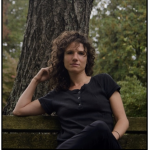 Kira Brooke Smith is a writer from central Pennsylvania, currently living and writing in Portland, Oregon. Her essays and narrative nonfiction works have been featured in The Guardian Online, The Pointed Circle, Plain China Anthology, The Atticus Review, Five Points, and Buckman Journal. She is an alumnus of Signal Fire Arts and Portland Community College’s Carolyn Moore Writing Residency. Her writing has received funding from the Regional Arts and Cultural Center. Kira is currently at work on her first essay collection. You can find more info about her at kirabrookesmith.com.
Kira Brooke Smith is a writer from central Pennsylvania, currently living and writing in Portland, Oregon. Her essays and narrative nonfiction works have been featured in The Guardian Online, The Pointed Circle, Plain China Anthology, The Atticus Review, Five Points, and Buckman Journal. She is an alumnus of Signal Fire Arts and Portland Community College’s Carolyn Moore Writing Residency. Her writing has received funding from the Regional Arts and Cultural Center. Kira is currently at work on her first essay collection. You can find more info about her at kirabrookesmith.com.



